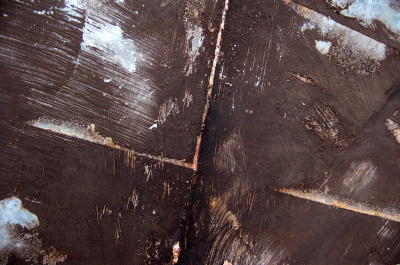What is Amosite Asbestos?
From the 1920s through the late 1970s, the building industry mostly employed the dangerous mineral fibre known as amosite asbestos. As one of the six recognised forms of asbestos, it is renowned for its ability to withstand heat. Amosite asbestos has a similar appearance to other natural mineral materials, but it contains long, thin fibres that are readily inhaled and can lead to major health issues, including cancer. The main distinguishing feature of amosite asbestos, which sets it apart from other types of asbestos, is its yellowish-brown colour. This fibrous substance is an excellent insulation material for structures since it is also very fire and heat-resistant. Unfortunately, despite the technical benefits, harmful quantities of airborne particles were exposed to employees and inhabitants in and around these locations.
Due to its strength and heat resistance, amosite asbestos was valued as a potent and all-purpose material. It is made up of prickly, needle-like fibres that crumble easily. Numerous cancer claims have been made as a result of the characteristics that made it desirable to employ amosite and other forms of asbestos in large quantities of consumer goods and domestic items. The majority of cancer lawsuits contend that asbestos exposure, in one way or another, contributed to the development of various malignancies, including lung and ovarian cancers, as well as mesothelioma.
How Does Amosite Asbestos Cause Cancer?
The needle-like fibres and dusty texture of asbestos make it dangerous. There is a possibility that someone nearby will breathe or consume asbestos dust if it enters the air. The small, needle-like asbestos fibres that enter the body can become embedded in the tissue that surrounds vital organs, producing inflammation and infection that may result in the growth of malignant tumours. Cancers including mesothelioma, lung cancer, and - in certain rare circumstances - ovarian cancer are known to be brought on by asbestos exposure.
The most frequent malignancies associated with asbestos exposure are mesothelioma and lung cancer. The primary distinction between the two is that mesothelioma has just one known cause, whereas lung cancer has several potential causes. Due to the rarity of the condition, mesothelioma is a fatal malignancy. Mesothelioma symptoms are frequently confused with other ailments, such as the flu or chest discomfort, and are not always addressed seriously. Mesothelioma frequently goes untreated because patients receive the wrong diagnosis. An estimated 7,000–11,000 new instances of lung cancer are brought on by asbestos each year. Asbestos-related lung cancer and lung cancer brought on by smoking or heredity are quite similar. Based on how the cancer started, there are no medical differences or differences in the course of treatment.

Need assistance finding asbestos removal near you?
Get a QuoteAmosite Asbestos Exposure
The sole known cause of mesothelioma is exposure to asbestos. If you or a loved one has been diagnosed with mesothelioma, it is likely that asbestos was once a common substance in your environment. Since amosite asbestos was widely employed in a variety of goods and projects up until the 1990s, it's possible to find it in the building materials of your home or place of business. It's possible that you handled amosite asbestos at work without the appropriate safety gear, or that you were doing someone else's laundry when they had asbestos dust on their clothing.
The majority of mesothelioma claims are the result of occupational asbestos exposure, which means the exposure took place at work. Shipbuilders, Navy personnel, construction workers, insulation workers, oil and chemical employees, power plant and refinery workers, railroad workers, auto workers, and more are the vocations most at risk for amosite asbestos exposure. Due to updated asbestos restrictions, some professions may not be as risky now, but legacy asbestos is still a threat. Legacy asbestos is asbestos that is still present in older buildings or constructions constructed during the asbestos period. Since its existence is unknown, this particular sort of asbestos is still harmful. Only skilled specialists should handle legacy asbestos, and anyone who is near the cancer-causing substance should use extreme caution.
What is Amosite Known As?
Since the Asbestos Mines of South Africa, also known as AMOSA, were one of the most significant producers of this kind of asbestos, grunerite came to be known commercially as amosite. Due to its colour, it is frequently referred to as "brown asbestos". Chrysotile fibres are substantially thinner and curvier than amosite fibres, which seem long and slender, almost needle-like, under a polarised light microscope. They are exceedingly fragile and typically found in bundles. They can occasionally resemble grains or flat prisms. The fibres are adaptable and are simple to bend into a broad arch. However, with extreme strain, the arch will crack and split into tiny fibres that can be ingested.
Contrary to chrysotile, the fibres have a flat end and are neither divided nor frayed. They don't conduct electricity and are incredibly acid-resistant. The most notable applications for this form of asbestos were in roofing materials, cement additives, and thermal insulation. The following list includes some additional commercial uses for asbestos, in addition to chrysotile and crocidolite: acid storage battery casings, spray-on insulation, ceiling tiles, asbestos-reinforced plastics, pipe and boiler insulation, and transit panelling.
Where Does Asbestos Originate?
The main mining locations for the naturally occurring mineral fibre known as asbestos are Canada (Quebec), Russia, and Zimbabwe. It has been used for reinforcing cement without making it brittle since Roman times and is recognised for being fire resistant. Asbestos has been used in a wide range of items during the past century, including water pipes, ceiling tiles, and pipe lagging. Some people have been exposed to asbestos through para-occupational exposures, such as those who cleaned the overalls of people working with asbestos or kids playing in areas where asbestos has been illegally dumped or around factories.
When asbestos fibres are inhaled, they gather in the lungs and take a very long time to be absorbed. They are a powerful carcinogen due to their long half-life, frequent fineness, and capacity to penetrate deeply into the lung. They are responsible for diseases like asbestosis, mesothelioma, and particularly lung cancer mesothelioma, which can take over twenty to forty years to develop but is typically fatal within eighteen months of diagnosis.
In this article:

